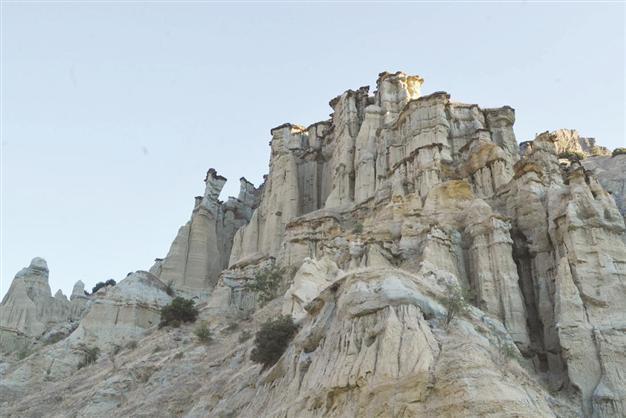Turkey's Kula Geopark gains world recognition
ANKARA - Anadolu Agency

Kula Volcanic Geopark had been included in the European and UNESCO Global Geopark Network. AA photos
The western province of Manisa, which is famous for its Tarzan and “mesir” paste, is now on the world market with its geopark area in the Kula district.
UNESCO Turkey National Committee member Professor Nizamettin Kazancı said the Kula Volcanic Geopark Area had won the right to be among the world’s most prestigious geoparks at the 12th International European Geopark Conference that was recently held in Italy.
He said the Kula Volcanic Geopark had been included in the European and UNESCO Global Geopark Network and it was a big step to protect the traces of the past. “Our inheritance was included in this list and got the International Geopark Quality Certificate. It is Turkey’s first geopark to be recognized by the international community. It has an area of 300 square-kilometers. The Kula Volcanic Geopark was registered as the world’s 99th geopark area and it will begin to receive visitors in the coming days,” said Kazancı.
He stressed that Turkey was very rich in terms of geological sources, and that geoparks were areas offering geological inheritance elements. “This area in Kula has many features different from similar ones in the world. First of all, Kula has a magnificent land structure and Turkey’s first lava tunnel. Also, this place has the traces of people, who are thought to be the primitive man. The traces of a dog, an adult or a child are very important in terms of world history because it tells us dogs were domesticated in ancient times. There are also many historical and cultural artifacts here. Its land is fertile because of the volcanic materials,” he said.
Since 2002Kazancı added that the idea to propose the region to be a geopark had come up in 2002. “There are some criteria to become a geopark. These criteria have been fulfilled thanks to the efforts from Kula Municipality between 2010 and 2013 and the Kula Volcanic Geopark Coordinator Erdal Gümüş,” he said.
Kazancı said promotion was important to make the area into a recognizable brand. “Kula, which is defined by the ancient era geographer Strabon as ‘Katakekaumene, meaning ‘Burned Land,’ in his work ‘Geographika’ has many geological and geomorphological structures, as well as more than 80 volcanic cones, fair chimneys, carstic inns, canyons, rock graves, stone bridges and historical houses. After being registered by the international community, we need to promote the area and get local people to make use of its advantages. Geotourism is rural area tourism. This type of tourism brings income to the people of the region. The Çamlıdere Geopark in Ankara Kızılcahamam is the best example of it. Particularly women receive income by selling hand-made products to tourists. The use of geological materials as tourism materials will increase income. Our country has many touristic areas and products. They should be offered to public with scientific researchers,” he said.
The number of geoparks in the world is currently 58 in Europe and 100 in the whole world.
